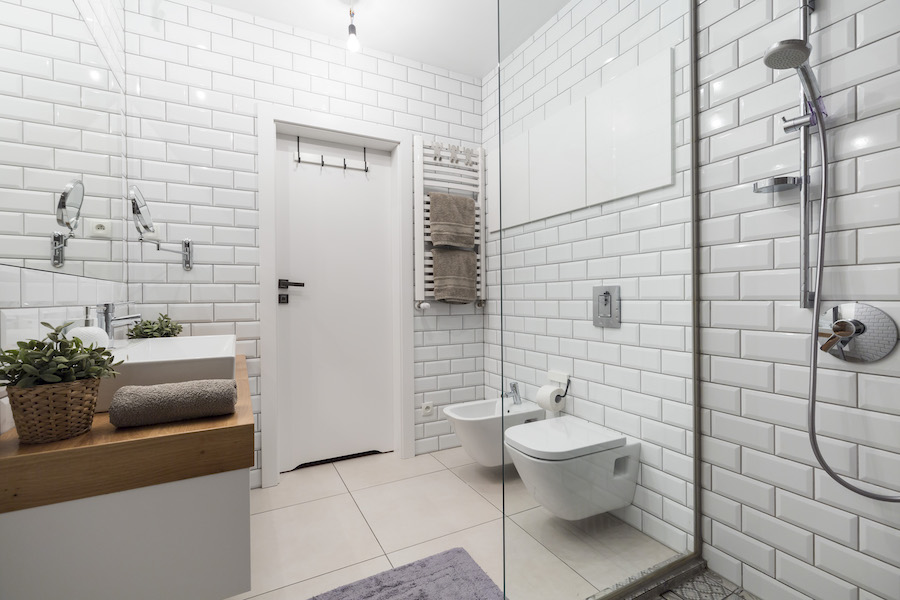Bathrooms and toilets are some of the most used and essential parts of any home. They are constantly exposed to water, moisture, and humidity, which can lead to water seepage, damage, and other issues if not addressed properly. Waterproofing these areas is crucial to maintaining their durability, hygiene, and safety. In this article, we will explore bathroom and toilet waterproofing services in simple terms to help you understand their importance, processes, and benefits.
What Is Bathroom and Toilet Waterproofing?
Bathroom and toilet waterproofing is the process of sealing the floors, walls, and joints to prevent water from seeping through. Waterproofing materials and techniques are applied to ensure that water stays within the designated areas, protecting the structure of your home and avoiding leaks.
Why Is Waterproofing Necessary in Bathrooms and Toilets?
- Prevents Water Leakage:
- Bathrooms and toilets are exposed to water daily.
- Waterproofing keeps water from leaking into adjacent rooms or floors below.
- Protects the Structure:
- Water seepage can weaken the foundation and walls of your home.
- Proper waterproofing keeps the structure strong and intact.
- Avoids Mold and Mildew:
- Moisture encourages the growth of mold and mildew.
- These can harm your health and damage the interior of your bathroom.
- Reduces Maintenance Costs:
- Repairing water damage is expensive and time-consuming.
- Waterproofing helps you avoid frequent repairs by preventing leaks and cracks.
- Enhances Longevity:
- Waterproofed bathrooms and toilets last longer and require fewer repairs.
- Improves Hygiene:
- Waterproofing prevents water from accumulating in hidden areas, keeping the bathroom clean and safe.
Common Problems Solved by Waterproofing
- Water Seepage: Waterproofing prevents water from seeping into walls, floors, and ceilings.
- Cracked Tiles or Walls: It seals cracks and stops water from passing through them.
- Dampness: Waterproofing keeps the bathroom dry and free from damp spots.
- Leaks in Adjacent Rooms: It stops water from leaking into neighboring areas of the house.
- Mold and Mildew Growth: Waterproofing reduces moisture levels, preventing the growth of mold and mildew.
Types of Waterproofing for Bathrooms and Toilets
- Cementitious Waterproofing:
- Cement-based coatings are applied to seal the surface.
- This method is commonly used in bathrooms and toilets because it is simple and effective.
- Liquid Waterproofing:
- A liquid coating, such as polyurethane or acrylic, is applied to the floor and walls.
- Once it dries, it forms a flexible, waterproof layer.
- Membrane Waterproofing:
- Waterproof membranes made of rubber or plastic are installed on the surface.
- This method is long-lasting and provides excellent protection.
- Bituminous Waterproofing:
- Bitumen-based materials are used to create a waterproof barrier.
- It is ideal for areas with high exposure to water.
- Epoxy Waterproofing:
- Epoxy coatings are applied to create a strong, water-resistant layer.
- They are durable and add a smooth finish to the bathroom surface.
Steps in Bathroom and Toilet Waterproofing
- Surface Preparation:
- The bathroom floor and walls are cleaned to remove dirt, grease, and debris.
- Damaged areas, such as cracks or holes, are repaired.
- Priming:
- A primer is applied to the surface to improve the adhesion of waterproofing materials.
- Application of Waterproofing Material:
- The chosen waterproofing material is applied to the surface in multiple layers.
- Special attention is given to joints, corners, and gaps around fixtures.
- Sealing:
- Joints and gaps are sealed using waterproof sealants to ensure there are no weak points.
- Testing:
- The waterproofing is tested by flooding the bathroom with water and checking for leaks.
- Finishing:
- Once the waterproofing is complete, tiles or other finishes can be installed.
Key Areas That Need Waterproofing in Bathrooms and Toilets
- Floors:
- Bathroom floors are exposed to water every day.
- Waterproofing prevents water from seeping into the floor and causing damage.
- Walls:
- Waterproofing the walls protects them from moisture and prevents damp patches.
- Joints and Corners:
- These areas are prone to leaks and need special attention.
- Around Fixtures:
- Waterproofing is essential around sinks, showers, bathtubs, and toilets to prevent water from entering gaps.
- Ceilings:
- Bathrooms located on upper floors need waterproofing to protect the ceiling of the room below.
Signs Your Bathroom or Toilet Needs Waterproofing
- Damp Walls or Ceiling: Moisture on walls or ceilings is a clear sign of water seepage.
- Water Stains: Stains or discoloration on tiles or walls indicate leaks.
- Cracks in Tiles or Grout: Cracks allow water to pass through and need to be sealed.
- Mold or Mildew: The presence of mold or mildew suggests high levels of moisture.
- Leaks in Adjacent Rooms: If water leaks into nearby rooms, waterproofing is required.
Benefits of Bathroom and Toilet Waterproofing
- Dry and Safe Space: Waterproofing keeps your bathroom dry and free from water damage.
- Durability: It increases the lifespan of your bathroom and reduces the need for repairs.
- Hygiene: A waterproofed bathroom is cleaner and more hygienic.
- Cost Savings: Preventing water damage helps you save money on repairs and maintenance.
- Peace of Mind: You can enjoy a worry-free bathroom experience without leaks or dampness.
Choosing the Right Waterproofing Service
- Experience: Choose professionals with experience in bathroom and toilet waterproofing. 3M Waterproofing has 11 year waterproofing service experience.
- Quality Materials: Ensure they use high-quality waterproofing materials.
- Affordable Pricing: Compare costs to find a service that fits your budget.
- Warranty: Select a service provider that offers a warranty for their work. Get a reliable waterproofing solution with 12 months warranty from 3M Waterproofing.
- Customer Reviews: Check reviews or ask for recommendations to find a reliable company.
DIY Waterproofing: Is It Possible?
While some people attempt waterproofing as a DIY project, it is generally better to hire professionals. Waterproofing bathrooms and toilets requires specialized knowledge, tools, and materials. Mistakes can lead to water damage and costly repairs. Hiring experts ensures the job is done correctly.
Cost of Bathroom and Toilet Waterproofing Services
The cost of waterproofing services depends on:
- The size of the bathroom or toilet.
- The type of waterproofing method.
- The materials used.
- Labor charges in your area.
Though it may seem expensive initially, waterproofing is a long-term investment that saves money by avoiding damage and repairs.
Conclusion
Bathroom and toilet waterproofing is an essential service for maintaining a dry, durable, and hygienic space. It prevents leaks, protects the structure, and ensures a safe and comfortable environment for you and your family. By choosing the right waterproofing method and professionals, you can keep your bathroom in excellent condition for years to come. Waterproofing is not just a necessity; it is a smart investment in the health and longevity of your home.

